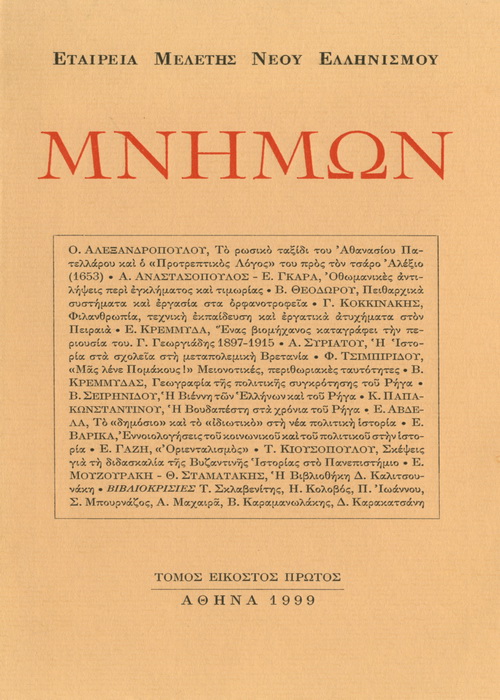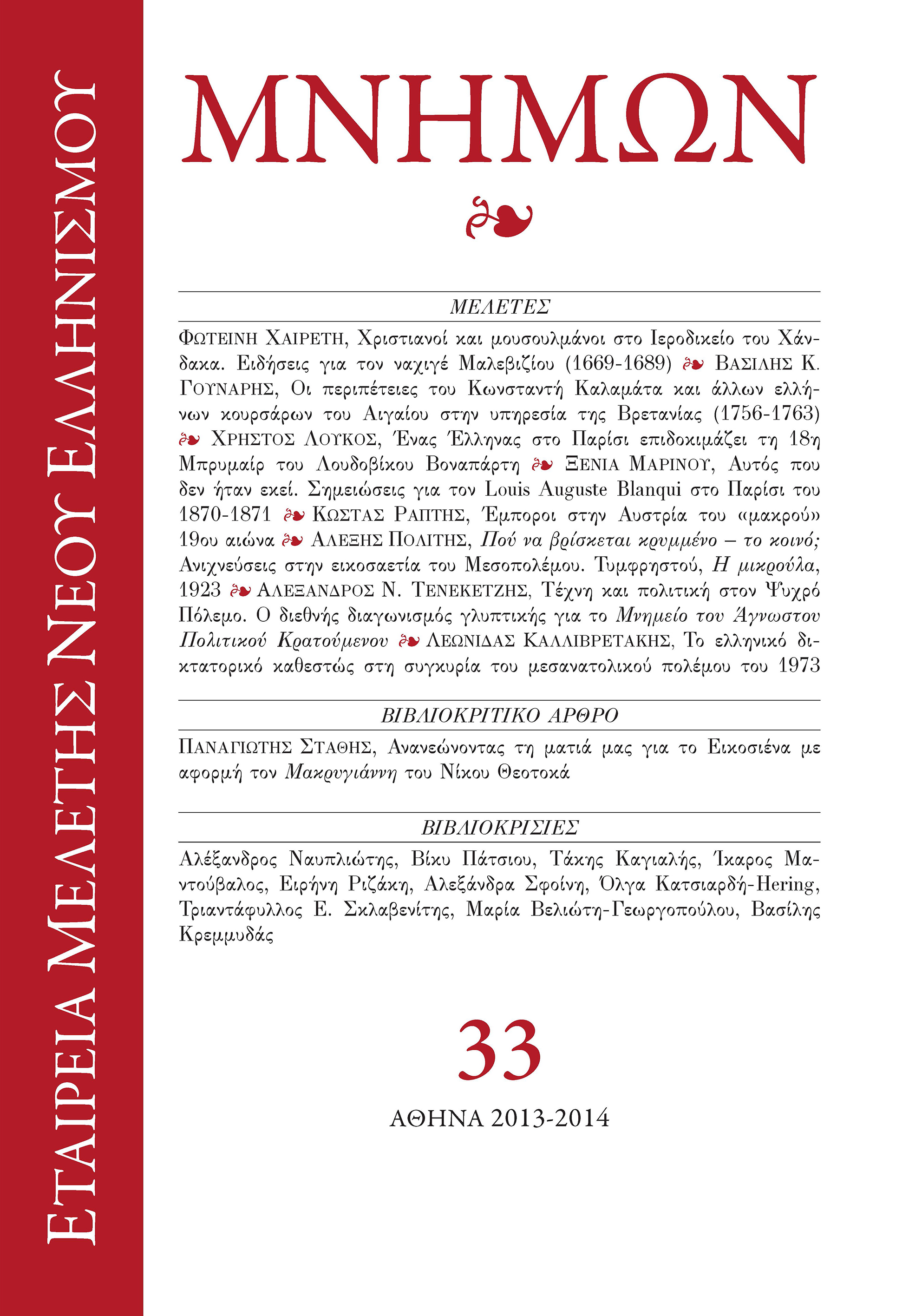ΑΣΤΙΚΕΣ ΤΑΞΕΙΣ ΚΑΙ ΑΣΤΙΚΟΤΗΤΑ ΣΤΗΝ ΕΥΡΩΠΗ, 1789-1914: ΠΡΟΣΑΝΑΤΟΛΙΣΜΟΙ ΤΗΣ ΣΥΓΧΡΟΝΗΣ ΙΣΤΟΡΙΟΓΡΑΦΙΑΣ
Περίληψη
Kostas Raptis, Middle classes and middle class culture in Europe, 1789-1914: approaches in modern historiography
The history of the european middle classes from the late 18th to theearly 20th century is a very wide topic and relates to economic, social,political, gender and culture history. This essay gives a brief overviewof the main subjects regarding it. It draws mainly on (pioneer) germanspeaking,but also on english and french literature. Following the currentdebate, it points to the different social and economic groups making upthe so called ((Bürgertum», to their common characteristics, as well astheir specific culture, the ((Bürgerlichkeit)).More specifically this paper is concerned with the followin subjects:— the composition of the «Bürgertum» and the features of its maingroups (professionals, bourgeois of money and bourgeois of knowledge)— the relevant terminology in german, french and english language— the comparison between upper middle class and nobility— the social position and role of the lowermiddle classes— the relation of the bourgeoisie to liberalism and nationalism— the study of the history of the middle classes in the specific contextof a town or a city (as an urban phenomenon)— the position and role of middle class women in a bourgeois society— the middle class family— the bourgeois way of life and culture in general
Λεπτομέρειες άρθρου
- Πώς να δημιουργήσετε Αναφορές
-
ΡΑΠΤΗΣ Κ. (1998). ΑΣΤΙΚΕΣ ΤΑΞΕΙΣ ΚΑΙ ΑΣΤΙΚΟΤΗΤΑ ΣΤΗΝ ΕΥΡΩΠΗ, 1789-1914: ΠΡΟΣΑΝΑΤΟΛΙΣΜΟΙ ΤΗΣ ΣΥΓΧΡΟΝΗΣ ΙΣΤΟΡΙΟΓΡΑΦΙΑΣ. Μνήμων, 20, 211–243. https://doi.org/10.12681/mnimon.675
- Τεύχος
- Τόμ. 20 (1998)
- Ενότητα
- ΠΡΟΣΕΓΓΙΣΕΙΣ
Οι συγγραφείς των άρθρων που δημοσιεύονται στο Μνήμονα διατηρούν τα δικαιώματα πνευματικής ιδιοκτησίας επί των άρθρων τους, δίνοντας στο περιοδικό το δικαίωμα της πρώτης δημοσίευσης. Άρθρα που δημοσιεύονται στο Μνήμονα μπορούν να χρησιμοποιούνται ελεύθερα, χωρίς δικαίωμα τροποποίησης (δημιουργία παράγωγου έργου) με αναφορά στο συγγραφέα και στην πρώτη δημοσίευση για μη κερδοσκοπικούς σκοπούς(άδεια Creative Commons 4.0). To Εθνικό Ίδρυμα Ερευνών διατηρεί το δικαίωμα να δημοσιεύει, να αναπαραγάγει, να παρουσιάζει στο κοινό, να διανέμει και χρησιμοποιεί άρθρα που δημοσιεύονται στο Μνήμονα σε οποιοδήποτε μέσο και μορφή είτε μεμονωμένα είτε ως μέρη συλλογικών έργων, για όλο το χρόνο διάρκειας προστασίας της πνευματικής ιδιοκτησίας και για όλες τις χώρες του κόσμου. Αυτό περιλαμβάνει ενδεικτικά και όχι αποκλειστικά, το δικαίωμα δημοσίευσης των άρθρων σε τεύχη του περιοδικού Μνήμων, αναπαραγωγής και διανομής μεμονωμένων αντιγράφων των άρθρων, αναπαραγωγής ολόκληρων των άρθρων σε άλλη έκδοση του ΕΙΕ, και αναπαραγωγής και διανομής των άρθρων ή περίληψης αυτών με χρήση πληροφορικού συστήματος αποθετηρίου.




